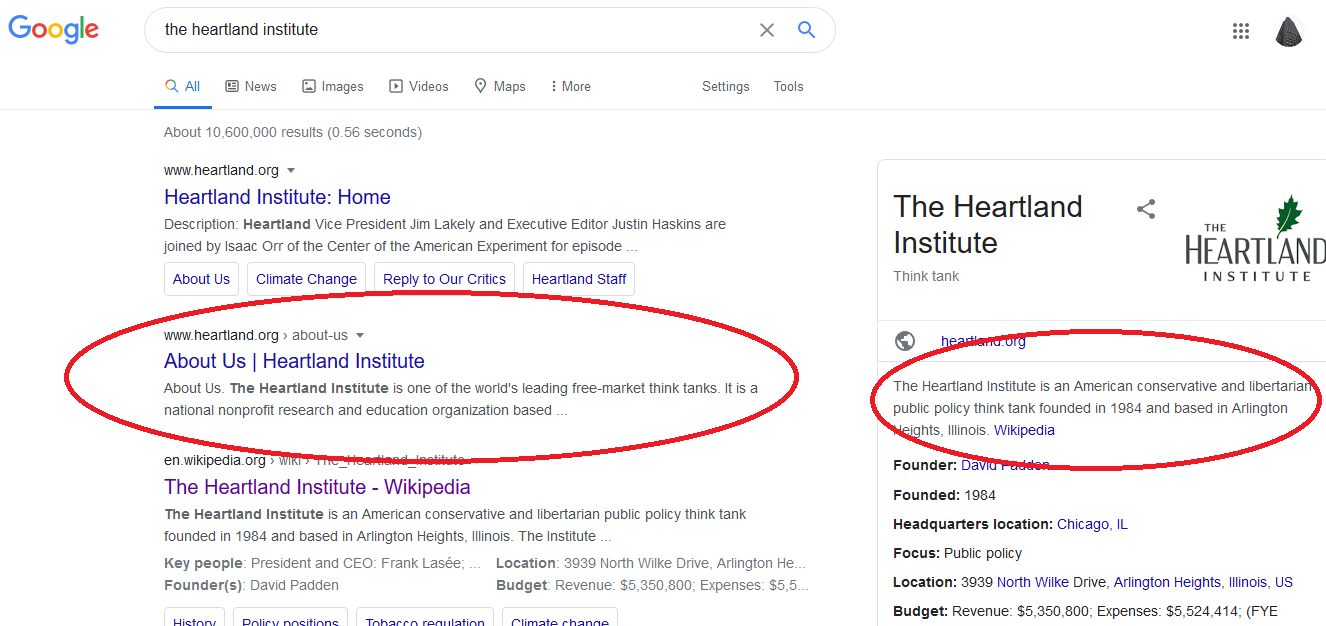Lateral Reading and SIFT in Action, Investigate the Source
To understand how SIFT and lateral reading can help in evaluating sources, it’s important to look at some examples in action. This example is adapted from Piedmont Virginia Community College’s Lateral Reading guide. So after we stop to think through the resource, it’s important to “Investigate the Source,” which lateral reading can help us through this process.
So one example that we can look at is the publication “RESEARCH & COMMENTARY: U.S. TRANSITION TO 100 PERCENT RENEWABLE ENERGY ‘WOULD LEAD TO CATASTROPHE’.” So reading this vertically or through ABCD (Authority, Bias, Currency, and Documentation) evaluation techniques, this looks like it might be a useful article about renewable energy for our research. It is a currently written article (2019), has an author with a history of writing articles as a “policy analyst,” and it links to other resources to back up their claims.
But now we can use our SIFT and lateral reading skills to learn about the organization behind this source: The Heartland Institute. If we use Google to search for information about this organization, we can see that “The Heartland Institute is an American conservative and libertarian public policy think tank known for its rejection of the scientific consensus on climate change and the negative health impacts of smoking” according to Wikipedia. Though Wikipedia cannot always be used as a credible source in our academic research assignments, it’s a great tool for fact checking and lateral reading. Wikipedia’s discussions of organizations tend to represent overall consensus on those organizations (or publications or websites) because of the specific standards and requirements in place for Wikipedia articles.

Screenshot of Heartland Institute Google Search
If you go further into researching this institute, you can find multiple reports and articles that show that The Heartland Institute is owned by billionaire Charles Koch, who is very open about his political beliefs and tends to support libertarian think tanks and organizations. He has also been public about his views on climate change and his belief that government regulation is not the answer. This confirms what Wikipedia indicated about the organization’s political alignment and indicates that there is likely to be biases at play here. Finding a source with bias doesn’t mean you automatically need to discard the source, but lateral reading can help you determine what biases or agendas might be present in a source that could potentially compromise the accuracy or authority of the information it provides. A high degree of bias is more likely to mean that claims made in a source are false or misleading.
So, what did we find out? We found out this think tank actively discredits climate change, and in fact, they have a record of discrediting scientifically proven claims such as secondhand smoke. In under a minute, we learned that The Heartland Institute is probably not worth using for our paper. Would you have come up with the same conclusion by ONLY looking at The Heartland Institute's site? It's possible, but it can also be a more efficient technique to read laterally or apply SIFT to evaluate online sources.
Quick Check: